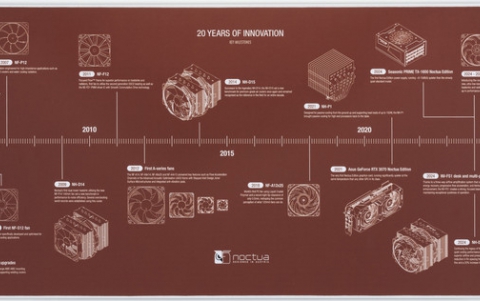The DaTARIUS DVD Analyzer R 2x
3. Servo and Tracking Parameters
Review Pages
- DPDAmp - Differential Phase tracking Error Signal Amplitude
 The differential phase tracking error signal amplitude is measured in the open loop mode. The serrated signal results from the phase signals of the quadrants of the diode, which are located diagonally to the track direction and after a special preparation of the signals.
The differential phase tracking error signal amplitude is measured in the open loop mode. The serrated signal results from the phase signals of the quadrants of the diode, which are located diagonally to the track direction and after a special preparation of the signals.
For pre-recorded media, DPT returns information about the pit geometry in the radial direction. A high DPT value means that the radial flank of the pits have a steep slope. A low DPT value means that the radial flanks of the pits have a gentle slope.
To avoid tracking problems in consumer players, the DPT signal is specified to range from 0.5 to 1.1.
Flanks that are too steep or too gentle do not offer better tracking. There is an optimal slope for pits. therefore, to stay as close as possible to the optimum, DPDT has to stay between the specified limit.
For recordable media we cannot consider the slope of the pit, but we can consider how well the beginning of the recorded mark are defined. This depends on the decomposition properties of the dye used, design of the media and the applied writing strategy. The combination of these properties gives a pattern of electrical signal that corresponds to one given by a pit with a slope. However, we can talk about the optical equivalent rather than a physical limit.
| Specification | DaTARIUS | ||
| Limits DVD+R/-R/RW/ DVD-5 /DVD-9 | Min | 0.5 | 0.5 |
| Max | 1.10 | 1.10 | |
| Measured | From | 0 | |
| To | 1.25 | ||
| Decimal places down | 2 | ||
-
DPDAsy - Differential Phase tracking Error Signal Asymmetry
This value is a measure of the DPDamp signal position in relation to the zero level.
For typical pre-recorded media we can say that an asymmetry in the DPDamp signal means the radial flanks of the pits do not have the same slope.
For recordable media we can think in an analogous way to pre-recorded media. Yet in this case 'radial flanks' mean the deformation of the side walls of the groove during recording. We know that writing a mark does not only mean a decomposition of the dye and deformation of bottom of the groove, but also a deformation of the side walls of the groove. This side wall of the groove is apparent and depends on the type of dye.
Similarly, the prime slope of the groove can be responsible for the level of the side wall deformation during recording. This can be seen by testing media made with the same dye but using different groove geometry.
| Specification | DaTARIUS | ||
| Limits DVD+R/-R/RW/ DVD-5 /DVD-9 | Min | -0.20 | -0.20 |
| Max | 0.20 | 0.20 | |
| Measured | From | -0.25 | |
| To | 0,25 | ||
| Decimal places down | 1 | ||
-
TPP - Tangential Push -Pull
TPP is a continuously measured value reported every megabyte and is better known as the tangential push-pull signal. This signal reflects the difference of the diode pairs, which are located in the radial direction (front and back side of the detector).
Responsibility for TPP lies in the definition of the beginning and end of the recorded mark rather than in the form of the side walls of the groove. (recordable media). Again, the major factor ruling this parameter is the dye and the recording method used.
| Specification | DaTARIUS | ||
| Limits DVD+R/-R/RW/ DVD-5 /DVD-9 | Min | ||
| Max | 0.9 | 0.9 | |
| Measured | From | 0 | |
| To | 1 | ||
| Decimal places down | 2 | ||
-
RADIAL2 - Radial Noise
The continuously measured value, reported for every megabyte, is measured according to the DVD specifications. This signal reports the deviations, which have a frequency between 1.1 and 10 KHz.
The centre of the pits on a track is not really on the same line. The PUH has to move (to the left or to the right) to centre itself and follow the pits. The radial movements from the nominal positions of the pick-up head are expressed in nanometers.
Peaks in the radial noise signal means that the PUH has to make an abnormal radial deviation, which can be caused by a black spot, a scratch, a bump, a dot etc. The signal is also related to the roughness of the side wall of the groove. For the recorded DVDR this is additionally enhanced through the recording process itself. Thus one may always expect a higher value of radial noise on the recorded media than on the corresponding blank one. Moreover, radial noise is a good indication of the quality of the stamper during the media manufacturing.
| Specification | DaTARIUS | ||
| Limits DVD+R/-R/RW/ DVD-5 / DVD-9 | Min | ||
| Max | 0.016 | 16 | |
| Measured | From | 0 | |
| To | 25 | ||
| Decimal places down | 0 | ||
| Unit | μm | nm | |
-
RADIAL1 - Radial Error
The continuously measured value, reported for every megabyte, is measured according to the DVD specifications. This signal is comparable to RADIAL1 (radial noise), but reports only the deviations, which have a frequency of less than 1.1 KHz. This kind of deviation represents a long succession of pits whose position is abnormally far from the default position of the pick-up head.
RAD1 shows the longer deviations of the side walls of the groove. These types of defects are more likely to be caused during the mastering process rather than during the media manufacturing itself. One may expect to see in the signal, variations in the track pitch which can come from faulty mastering.
| Specification | DaTARIUS | ||
| Limits DVD+R/-R/RW/ DVD-5 / DVD-9 | Min | -0.022 | |
| Max | 0.022 | 22 | |
| Measured | From | 50 | |
| To | 0.2 | ||
| Decimal places down | 0 | ||
| Unit | μm | nm | |
-
FE - Focus Error
Continuously measured, this signal reflects the axial/vertical deviation of the pick-up.
The distance between the PUH and the surface of the disc is variable. When the deviation is greater than the deviation specified/allowed, the spot is not optimally focused on the track and can result in read-out/tracking problems. The signal reports the deviations, which have a frequency below 10KHZ.
Axial deviations can be caused by bumps or dishing/skew.
| Specification | DaTARIUS | ||
| Limits DVD-5 / DVD-9 | Min | -0.23 | |
| Max | 0.23 | 230 | |
| Measured | From | 0 | |
| To | 500 | ||
| Decimal places down | 0 | ||
| Unit | μm | nm | |
Mechanical parameters
-
TRP - Track Pitch
The scaled, continuously measured value reflects the distance between adjacent physical track centerlines in the radial direction.
When the laser spot is on the track, the returned signal also affects information from the adjacent track. The phenomenon can disturb the correct read-out of the disc. Therefore, the space between the tracks should be large enough so that the laser spot highlights the information from one track and a minimum from the adjacent tracks.
| Specification | DaTARIUS | ||
| Limits DVD+R/-R/+RW/ DVD-5 /DVD-9 | Min | 0.71 | 0.71 |
| Max | 0.77 | 0.77 | |
| DVD-RW | Min | 0.73 | |
| Max | 0.75 | ||
| Measured | From | 0.40 | |
| To | 1.65 | ||
| Decimal places down | 2 | ||
| Unit | μm | ||
-
SVYd - Scanning Velocity
Scanning velocity corresponds to the speed at which the laser's pick-up head travels along the spiral track of the disc. This continuously scaled value is calculated by measuring the radius and the exact time for one revolution. The resulting value corresponds to the speed at which the laser's pick-up head travels along the spiral track of the disc.
The value of scanning velocity specified for both DVD-R and DVD+R discs is equal to 3.49 m/s /s, and corresponds to the nominal Channel bit rate 26, 15625 Mbits/s.
The electronics of a player can read-out data at different speeds, depending on their hardware specifications.
| Specification | DaTARIUS | ||
| Limits DVD+R/-R/RW/ DVD-5 | Min | 3.46 | 3.46 |
| Max | 3.52 | 3.52 | |
| DVD-9 | Min | 3.81 | |
| Max | 3.87 | ||
| Measured | From | 3 | |
| To | 4.25 | ||
| Decimal places down | 2 | ||
| Unit | m/s | m/s | |
Review Pages


















